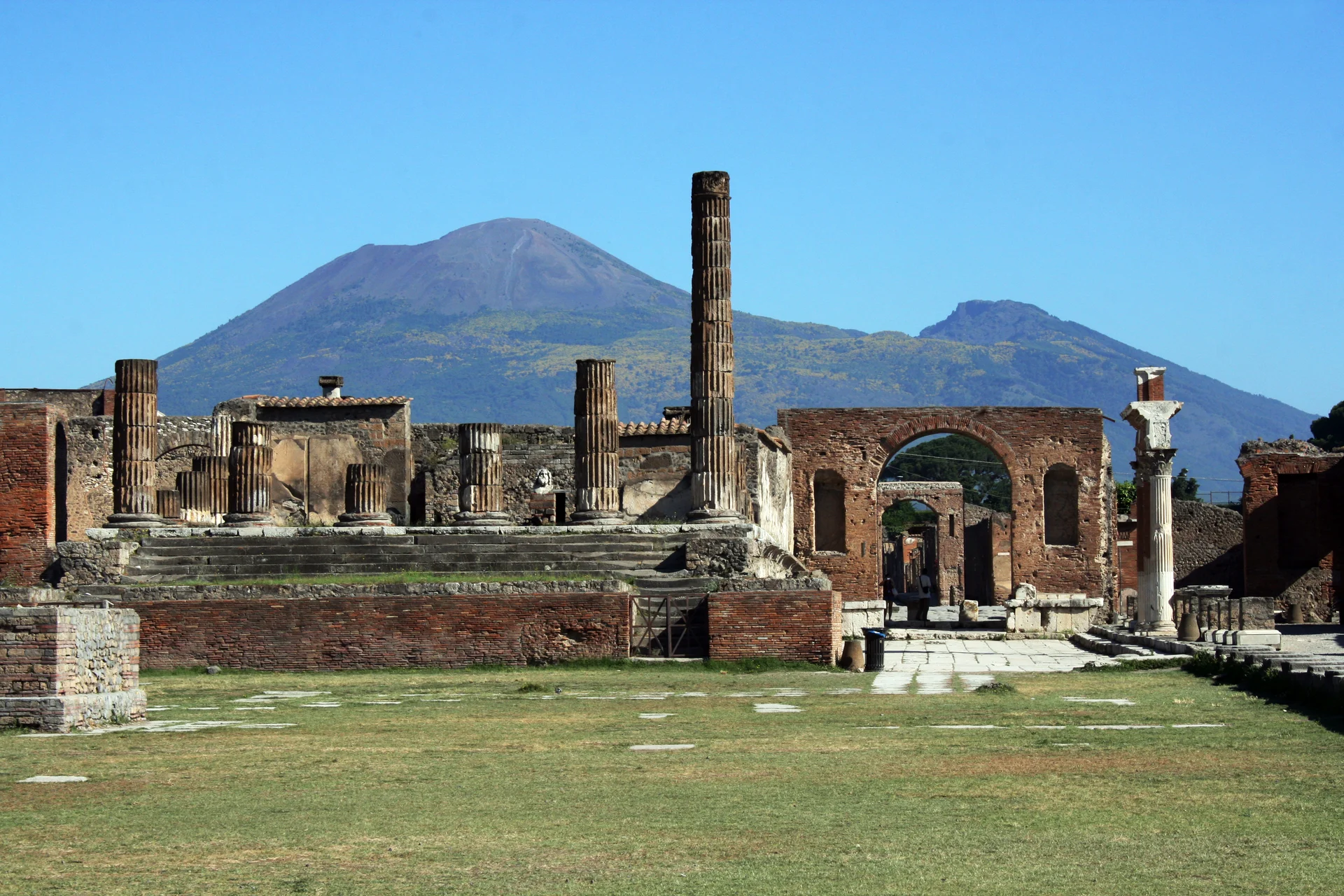
Pompeii Frozen in Time by Mount Vesuvius's Eruption
Three Preserved Roman Cities from 79 AD Era
About This Site
Discover three exceptional Roman archaeological sites buried by Mount Vesuvius in 79 AD. Pompeii, Herculaneum, and Villa Oplontis preserve ancient Roman daily life, magnificent frescoes, and sophisticated urban planning in extraordinary detail, offering unparalleled insights into ancient civilisation. These UNESCO World Heritage sites showcase the full spectrum of Roman society, from bustling commercial centres to luxury seaside villas. The volcanic catastrophe that destroyed them created a unique archaeological time capsule, preserving organic materials, wooden structures, and human remains impossible to find elsewhere. Walking through these ancient streets reveals the intimate details of how Romans lived, worked, and expressed themselves artistically two millennia ago.
Why It Matters
These UNESCO World Heritage archaeological areas provide an incomparable snapshot of Roman society, from bustling commercial centres to luxury imperial villas, frozen in time by catastrophic volcanic eruption and revealing the full remarkable spectrum of ancient Roman life through exceptional preservation of buildings, artworks, and organic materials unavailable elsewhere.
Treasures of the Buried Cities
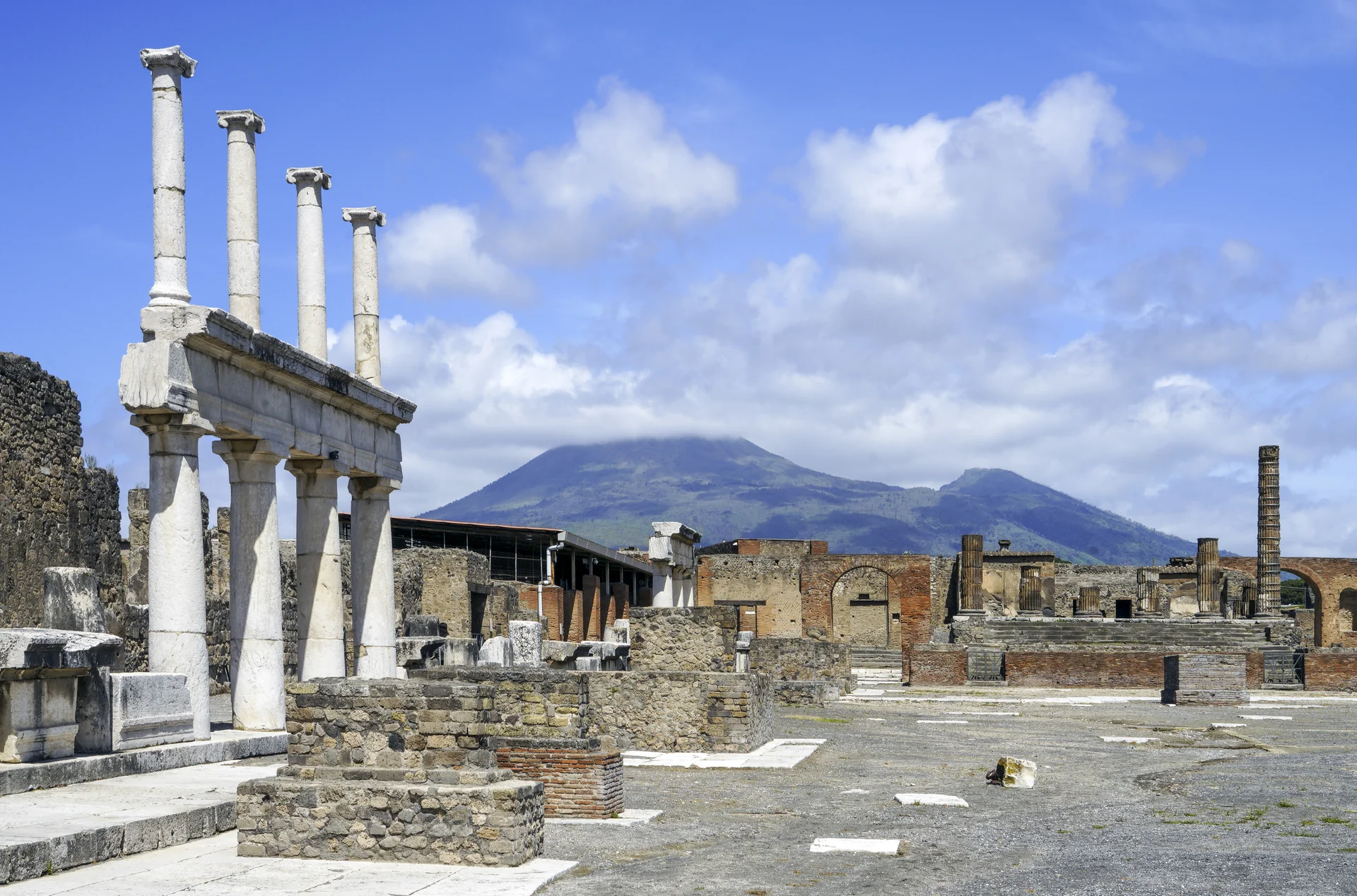
Pompeii Forum and Temples
The political and religious heart of ancient Pompeii, featuring the Forum surrounded by important temples including the Temple of Jupiter, with Mount Vesuvius providing a dramatic backdrop. The basilica served as the main courthouse and business centre, whilst the macellum was the primary food market. These structures showcase the sophisticated urban planning and civic life of a thriving Roman commercial city. Standing in the Forum, visitors can envision the bustling activity of merchants, politicians, and citizens who gathered here for commerce, governance, and religious ceremonies. The preserved columns and architectural details reveal the grandeur that characterised Roman public spaces.
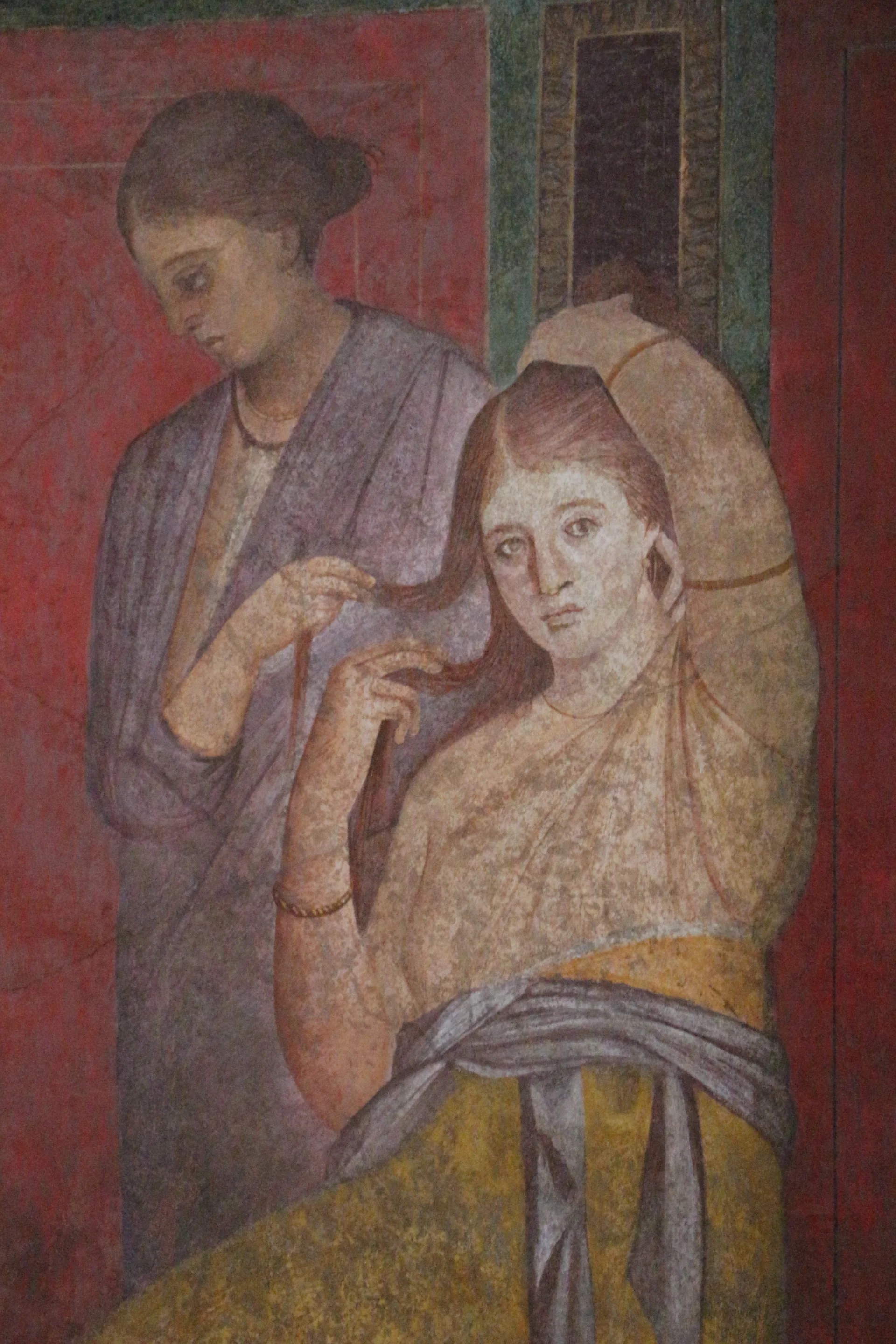
Villa of the Mysteries
Located outside Pompeii's main city walls, this exceptionally preserved Roman villa contains some of the most famous ancient frescoes in the world. The villa's name derives from the mysterious initiation ritual depicted in the spectacular Second Style wall paintings of the main hall. These vivid red-background frescoes show life-sized figures participating in what appears to be Dionysiac mystery rites, offering unparalleled insight into ancient Roman religious practices and artistic techniques. The quality of preservation allows visitors to appreciate the sophisticated painting methods and symbolic content that reveal aspects of Roman spiritual life rarely documented elsewhere.
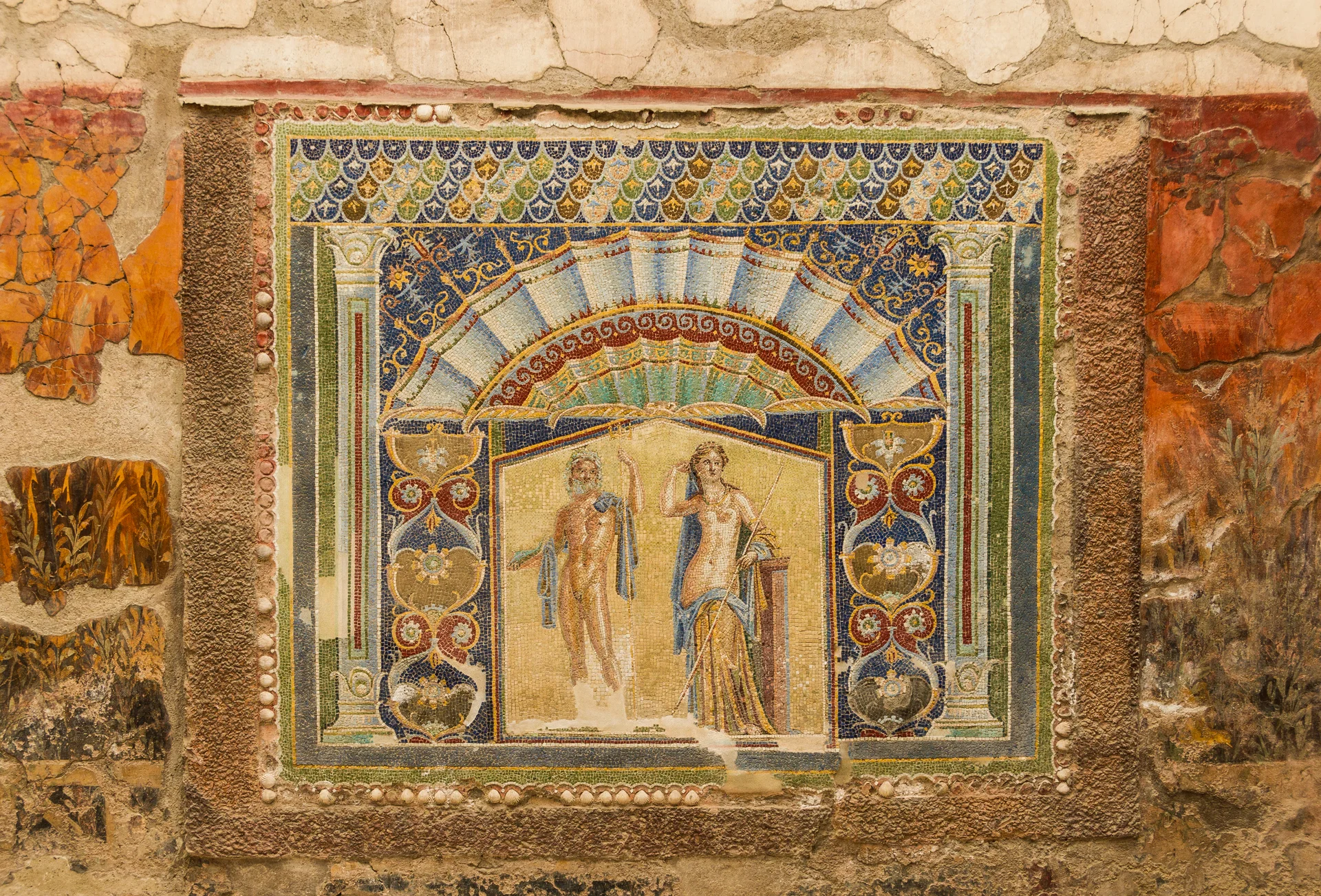
Herculaneum Mosaics and Houses
Herculaneum's unique preservation conditions created by pyroclastic flows resulted in extraordinary conservation of organic materials, wooden structures, and intricate mosaics. The Casa dell'Atrio a Mosaico and other elite residences showcase stunning floor mosaics with geometric patterns and artistic designs. Unlike Pompeii's larger scale, Herculaneum offers intimate glimpses into wealthy Roman domestic life, with better-preserved multi-storey houses, balconies, and decorative elements throughout the archaeological area. The famous Neptune and Amphitrite mosaic represents the pinnacle of Roman decorative arts, with intricate glass and stone work that demonstrates sophisticated artistic techniques and mythological knowledge.
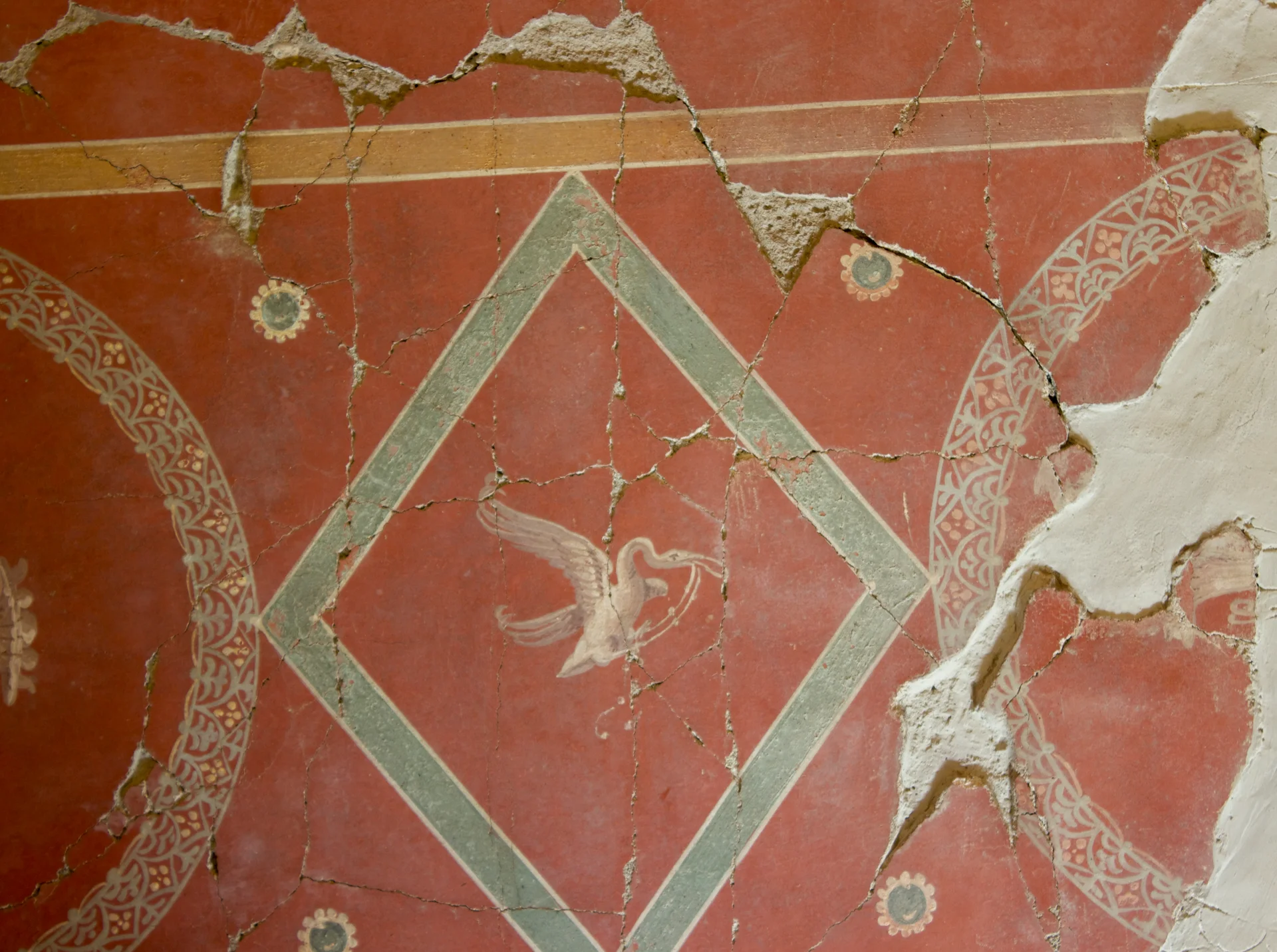
Villa Poppaea Frescoes (Torre Annunziata)
Villa Oplontis, known as Villa Poppaea, represents the pinnacle of Roman luxury villa architecture and decoration. This seaside villa features extraordinary Second and Third Style frescoes including mythological scenes, architectural illusions, and garden paintings. The villa's grand peristyle, swimming pool complex, and elaborate room decorations demonstrate the opulent lifestyle of the Roman imperial elite. The frescoes here are considered among the finest examples of Roman wall painting, with sophisticated perspective techniques and rich colour palettes that create immersive artistic environments. These decorative programmes reveal how wealthy Romans transformed domestic spaces into artistic galleries.
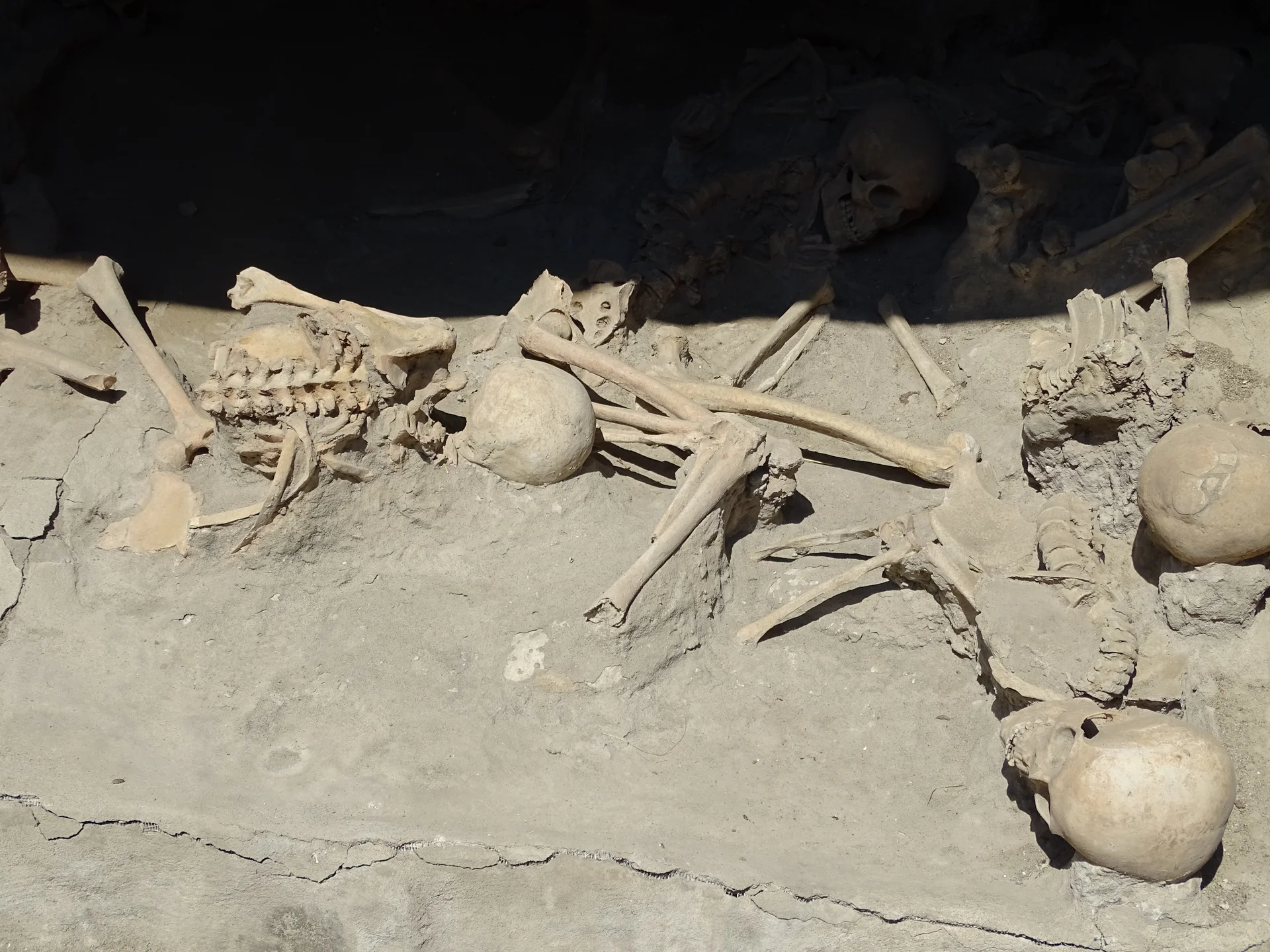
Herculaneum Boat Houses
The most poignant discovery at Herculaneum, these chambers along the ancient shoreline contain over 300 preserved human remains from the 79 AD eruption. Originally boat storage facilities, they became final refuges for families attempting seaborne escape. The perfectly preserved skeletons, including mothers with children clutching personal belongings, provide deeply moving testimony to the disaster whilst offering invaluable scientific insights into ancient Roman demographics, health, and social structures during this catastrophic moment. Modern analysis of bones, teeth, and preserved organic matter reveals details about ancient diet, disease, and living conditions. The family groups discovered here tell individual stories of the eruption's tragic final hours, showing how ordinary Romans faced extraordinary circumstances.
Location & Planning
Access from Naples via Circumvesuviana railway: Pompei Scavi, Ercolano Scavi, Torre Annunziata stations (30-45 minutes between sites). Book combination tickets online for savings. Organised tours available from Naples, Sorrento, or Amalfi Coast including transport and guides.
Loading map...
Frequently Asked Questions
Pompeii is a Roman city buried by Mount Vesuvius in 79 AD, preserving daily life in extraordinary detail. This UNESCO site offers unparalleled insights into ancient Roman society through intact frescoes, mosaics, buildings, and even bakeries with bread still in ovens.
Pompeii was founded by Samnites around 7th-6th century BC, later becoming a major Roman commercial centre. Mount Vesuvius catastrophically erupted on 24 August 79 AD, burying the city in ash and pyroclastic flows, killing thousands but preserving the urban landscape.
Take Circumvesuviana railway from Naples Central Station to Pompei Scavi (30 minutes). Trains run frequently. Purchase tickets online to avoid queues. Many organised tours from Naples include transport, entry, and guides. Allow 4-5 hours minimum for Pompeii alone.
October through April offers cooler weather and fewer crowds. Summer visits require early morning or late afternoon timing due to intense Mediterranean heat and limited shade. Early morning visits provide better lighting for photography and peaceful atmosphere.
Yes, advance tickets required. Cost-saving combination tickets available for Pompeii, Herculaneum, and Villa Oplontis. Purchase online to guarantee entry and avoid queues, especially during peak summer months. Audio guides available for rent on-site at entrance.
Wear comfortable walking shoes for uneven ancient pavements, wide-brimmed hat, and sun protection. Bring abundant water for extensive outdoor exploration. Limited shade at sites requires sun-protective clothing throughout. Avoid wearing expensive jewellery in crowded areas.
Pompeii was a large commercial city with grand public spaces, whilst Herculaneum was a smaller, wealthy resort town. Herculaneum has better preservation of organic materials, wooden structures, and mosaics due to different volcanic burial conditions, offering a more intimate experience.
UNESCO World Heritage Criteria
Inscribed in 1997, this site meets 3 of UNESCO's 10 criteria for Outstanding Universal Value
Criterion (iii): Testimony to cultural tradition
Pompeii provides exceptional testimony to Roman society frozen in time by Vesuvius' eruption, preserving unparalleled evidence of daily life, social structures, commercial activities, and domestic architecture that reveals intimate details of 1st-century Roman civilisation impossible to obtain from any other archaeological site.
Criterion (iv): Outstanding architectural/technological ensemble
The archaeological area exemplifies outstanding examples of Roman urban planning, architectural types including amphitheatres, temples, bathhouses, and residential structures with exquisite frescoes, demonstrating sophisticated engineering, artistic achievement, and the complete range of building typologies defining Roman cities at their zenith.
Criterion (v): Outstanding traditional human settlement
Pompeii represents an outstanding example of Roman coastal settlement demonstrating urban development patterns, economic prosperity from maritime trade, and the relationship between cities and Mount Vesuvius, whilst its sudden destruction preserved unique evidence of human settlement patterns vulnerable to natural disasters.
Historical Context
Roman Development (3rd century BC - 79 AD)
Pompeii grew from Samnite settlement to major Roman commercial centre with extensive trade networks and bustling markets, whilst Herculaneum developed as elite resort town featuring luxury villas like Villa Oplontis showcasing imperial wealth and sophisticated urban planning.
Vesuvius Eruption (24 August 79 AD)
Mount Vesuvius erupted catastrophically on 24 August 79 AD, burying the cities in volcanic ash and deadly pyroclastic flows, instantly preserving daily life in extraordinary detail but killing thousands of inhabitants who were unable to escape the disaster.
Rediscovery Period (1748-1750s)
Systematic excavations began under Bourbon rule in 1748, initially focused on treasure hunting for royal collections but gradually developing into scientific archaeology as the extraordinary importance of the buried sites became clear to scholars and researchers worldwide.
Modern Archaeology (19th-20th centuries)
Scientific excavation methods revealed complete urban layouts, daily life details, and artistic treasures throughout the sites, establishing these archaeological areas as fundamental to Roman studies and transforming archaeological practices worldwide through innovative conservation approaches and documentation techniques.
UNESCO Recognition (1997-present)
World Heritage designation in 1997 recognises the sites' outstanding universal value as the most complete record of ancient Roman life. Ongoing conservation efforts address challenges from tourism, weather exposure, and urban development pressures whilst maintaining public access and continuing archaeological research programmes.
Conservation & Protection
Current Conservation Status
Ongoing conservation efforts protect fragile frescoes, structural integrity, and archaeological context whilst managing millions of annual visitors and environmental threats.
Conservation Challenges
- Tourism pressure from over 2 million annual visitors causing wear to ancient structures
- Weather exposure threatening frescoes and organic materials over centuries of excavation
- Urban development encroachment pressures from surrounding modern Naples metropolitan area
- Limited funding resources for comprehensive conservation of vast archaeological areas
Active Conservation Efforts
- Advanced climate control systems protecting the most fragile frescoed areas and sensitive artifacts
- Visitor management programmes limiting access to vulnerable zones and rotating restricted areas
- International conservation partnerships bringing expertise and substantial funding for restoration projects worldwide
- Digital documentation creating detailed records of all artifacts and architectural features for research and preservation
Image & Content Attribution
Research & Content Sources
Photography & Visual Media
Last updated: 9 October 2025